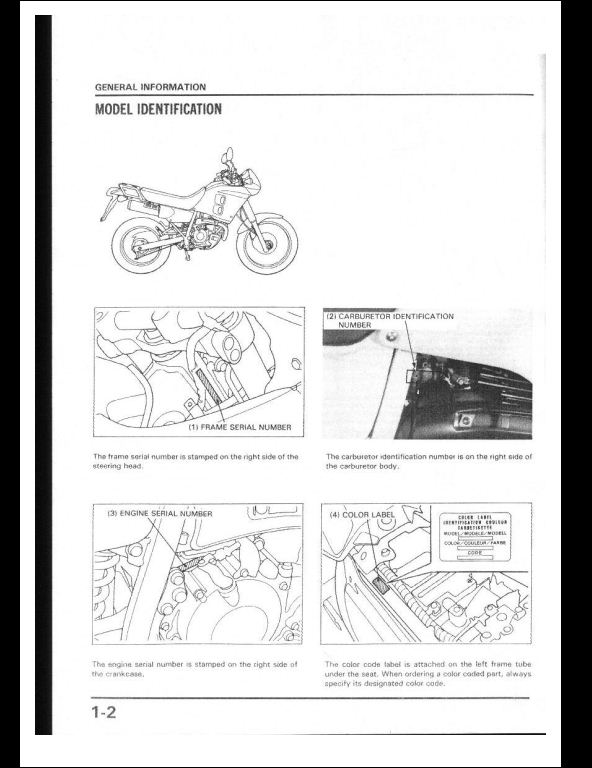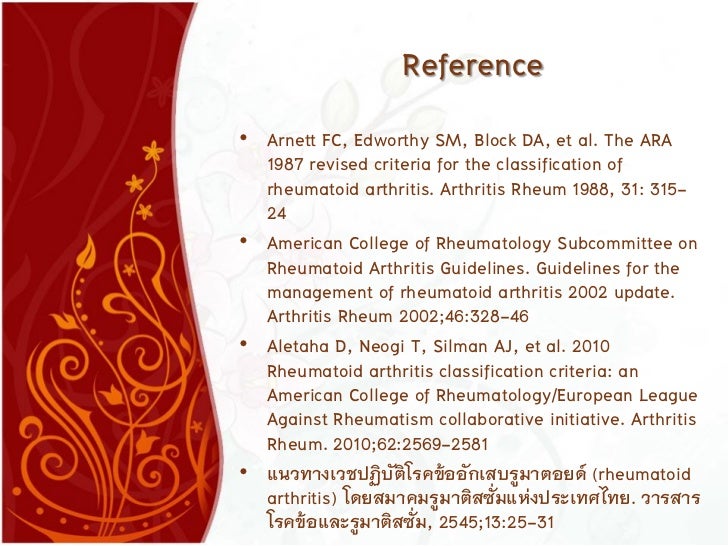Forthcoming Updated European League Against Rheumatism Eular Management Guidelines
EULAR has published its updated recommendations for the management of gout, reflecting updated data included in a meta-analysis by a task force The European League Against Rheumatism (EULAR) has published its updated recommendations for the management of gout, reflecting updated data included in a meta-analysis by a task force consisting of 15 rheumatologists, 1 radiologist, 2 general practitioners, 1 research fellow, 2 patients, and 3 epidemiology experts representing 12 European countries. The last recommendations from 2006 were reviewed by each task force member and assigned scores according to expert opinion. A literature search of MEDLINE, EMBASE, and Cochrane Library databases, including work published between January 2005 in in June 2013, was conducted utilizing the Oxford Centre for Evidence-Based Medicine standards to assign levels of evidence and recommendation grades. Final EULAR 2016 Gout Management Recommendations.
Acute gout flares should be treated as soon as diagnosed. First line options identified for acute flare include: colchicine, loading dose of 1 mg, 0.5 mg on day 1, or a nonsteroidal antiinflammatory drug (NSAID), oral corticosteroids (equivalent prednisolone dose of 30–35 mg/day for 3–5 days), or joint aspiration with intraarticular injection of corticosteroids. Avoid colchicine and NSAID administration in patients with renal impairment. Interleukin(IL)-1 blockers should be considered in patients with both frequent disease flares and contraindications to receiving colchicine, NSAIDs, or corticosteroids. Urate-lowering therapy (ULT) should be accompanied by prophylaxis in the first 6 months of treatment. This panel recommends colchicine, at a dose of 0.5–1 mg/day, with adjustments for renal impairment.
MADRID, Spain — The European League Against Rheumatism (EULAR) guidelines, unveiled here at the 2013 congress, are being updated from 2010 and contain notable.
When colchicine is not tolerated well or is contraindicated, prophylaxis with NSAIDs at a low dosage can be considered. Patients with definitive gout diagnosis and ≥2 gout flares/year, tophi, urate arthropathy, or recurrent kidney stones should be considered for ULT. Patients who are 8 mg/dL (480 µmol/L), or other comorbidities should receive early ULT. SUA targets of.
Wednesday, August 03, 2016 European Guidelines Strongly Recommend Physical Therapy With Exercise for Fibromyalgia Experts from 12 European countries now unanimously recommend supervised exercise as a primary intervention for individuals with fibromyalgia. According to an updated clinical practice guideline (CPG) by the European League Against Rheumatism (EULAR) published in, physical therapy with graded exercise is the only intervention that received the group's strongest recommendation.
The previous EULAR guideline found very few studies on pharmacologic or nonpharmacologic treatments for fibromyalgia, but that has changed. The current CPG is based on an analysis of 275 published articles and 107 systematic reviews. Authors looked at how well interventions addresseed, pain, fatigue, sleep, and daily functioning, and assigned levels of support for each intervention: 'strong against,' 'weak against,' 'weak for,' and 'strong for.' Highlights include: Aerobic exercise and resistance training significantly reduce pain and improve physical function.
The evidence seems to suggest that land- and water-based exercise are equally effective, though more research is needed in that regard. The recommendation was “strong for.” Acupuncture may decrease pain and fatigue. Some studies showed improvements in pain and fatigue after acupuncture, but the “evidence supporting the use of real versus sham acupuncture was less consistent.” The EULAR recommendation was “weak for.” Chiropractic treatment is not proven to be effective at relieving pain.
Due to a lack of high-quality studies, authors recommended “strong against.” Hydrotherapy/balneotherapy show promise to relieve pain. While both showed “significant improvement in pain,” the studies did not evaluate “intention to treat.” The recommendation was “weak for.” Massage does not significantly reduce pain. Authors recommended “weak against” massage, because the data that did show some positive effect was from low-quality studies. Mindfulness/mind-body therapy may decrease pain. While the studies showed improvement in pain, there was risk of bias.
Authors recommended “weak for.” Based on this evidence, authors recommend that, after being diagnosed with fibromyalgia and receiving patient education materials, the next option should be physical therapy “with graded physical exercise” that could be combined with other nonpharmacologic treatments like acupuncture. For patients not helped by physical therapy or other nondrug therapies, authors suggest a few medications to address severe pain or sleep problems and psychological therapies for depression, anxiety, catastrophizing, and “overly coping.” Experts also recommend research into what type of exercise is most effective, and whether combining drug therapy and nondrug therapy might be more effective than a single therapy alone. The are available through APTA's, which offers a wide range of synthesized research and evidence-based practice information. Labels: Comments. We have worked for many years with pts. W/ dx of fibromyalgia. As a PT I am not qualified legally to diagnose, but most had Myofascial Pain Syndrome(MPS) by standard criteria.
Yes, ex helps them. True fibro pts. Get worse with anything other than light ex and even that does not help their pain. What helps both dxs is manual therapy like Myofascial Release but very few clinicians are doing the treatment because it takes time but gets results when other treatments do not. However my study found that pts. Reported 75% improvement in average of 12 visits. Treatments were 1 hr, one-on-one with a licensed, trained therapists.
Bet there were no such studies done. One fibro study on ex that I read showed that a very large% of prospective participants refused to participate. That is because they KNOW that ex makes them worse, because they tried.
Richard Fowler, PT Posted by Richard Fowler on 8/3/2016 5:18 PM. I totally agree with Mr Fowler that targeted manual therapy can be helpful.
Title Slide of Honda nx 650 dominator service manual. 

What is also crucial is education in pacing, proper body mechanics, stress reduction, proper nutrition for a comprehensive approach. The 1:1 attention by a PT is needed to treat, teach and follow-up on all of these concepts for best success since fibro is multi-faceted! Mary Fridlund, PT Posted by Mary Fridlund -?FQbC on 8/4/2016 9:15 AM. Richard. What was your long term follow up for your study?
What was the improvement on (75%)? Do you have reference for this specific myofascial release treatment? Did you ever consider nonspecific effects for the success you experienced with your patients?
Is it that patients do not get better with exercise or there is improper dosing of said prescribed exercise? What are your thoughts on the Cochrane review? 'GOLD LEVEL evidence to support the use of exercise and aerobic exercise for patients with Fibromyalgia' Busch, A. Barber, et al. 'Exercise for treating fibromyalgia syndrome.' Cochrane Database Syst Rev(4): CD003786. Posted by Marcos Lopez PT on 8/4/2016 9:32 AM.

Josef S Smolen
Providing passive treatment to patients with chronic pain conditions is a slippery slope. I too believe there is a place and time for manual techniques however they should be used as a vehicle to a more active approach. The body of evidence supporting exercise/movement is too large now to continue to perpetuate passive modalities in this population. Posted by Nicholas Maiers on 8/4/2016 10:32 AM. I agree with Mr Fowler! After 39 years of PT experience and most of that time dealing with chronic pain patients, I think more emphasis needs to be placed on the education part!
Evidence-ba…
From reading I have done and from learning what works from my patients, the importance of education in proper posture, body mechanics, nutrition, sleep hygiene stress management and pacing are essential. Pacing is probably the most difficult concept to get across!! Posted by Mary Fridlund, PT on 8/4/2016 5:48 PM. I was dxd x with fibromyalgia in 1996. The md started a regimen of meds that helped some. However I have found that massage therapy once a week is the only thing that truly relieves the pain.

Posted by Janice Biggers on 8/4/2016 10:23 PM. Anecdotal evidence is a dangerous way to evaluate success of treatment type. We as a profession need to stay grounded in the research. Without peered reviewed research backing what we do we fall into 'alternative/complementary medicine' rather than incorporated in the medical model. Practice not based on research is not physical therapy.
Posted by Zach on 8/5/2016 7:32 PM.